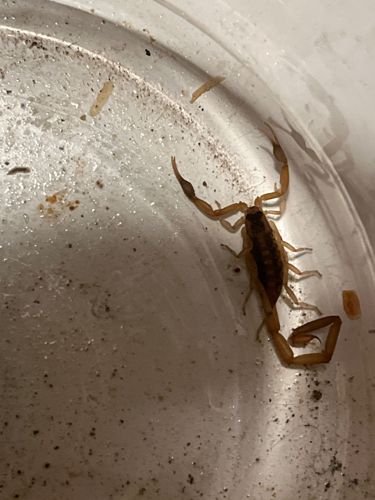Scorpion
Scientific Name: Scorpiones (order)
Order & Family: Order: Scorpiones, Family: Varies (e.g., Buthidae, Hadruridae)
Size: Most scorpions range from 9 mm (0.35 in) to 23 cm (9.1 in) in length. The one pictured appears to be on the smaller side, possibly a few centimeters.

Natural Habitat
Typically found in arid and semi-arid regions, desert environments, grasslands, forests. They hide under rocks, logs, bark, in burrows, or crevices during the day.
Diet & Feeding
Strictly carnivorous, preying on insects, spiders, other scorpions, and small vertebrates like lizards and mice. They use their pincers (pedipalps) to catch and crush prey, and their stinger to inject venom to paralyze larger or more struggling prey.
Behavior Patterns
Nocturnal predators, active primarily at night. They are solitary creatures. Many species fluoresce under ultraviolet light. Females give birth to live young, which ride on her back until their first molt.
Risks & Benefits
Risks: All scorpions possess venom, but only about 25 species worldwide have venom potent enough to be considered dangerous to humans. Stings can be painful, causing swelling, numbness, and tingling. In severe cases, especially with highly venomous species, symptoms can include muscle spasms, respiratory issues, and even death, particularly in children or individuals with compromised health. The species in the image appears to be a smaller, lighter-colored scorpion, which could potentially be a bark scorpion (e.g., Centruroides sculpturatus) if located in North America, known for medically significant venom. Benefits: They play a role in controlling insect populations, acting as natural pest control in their ecosystems.
Identified on: 9/23/2025